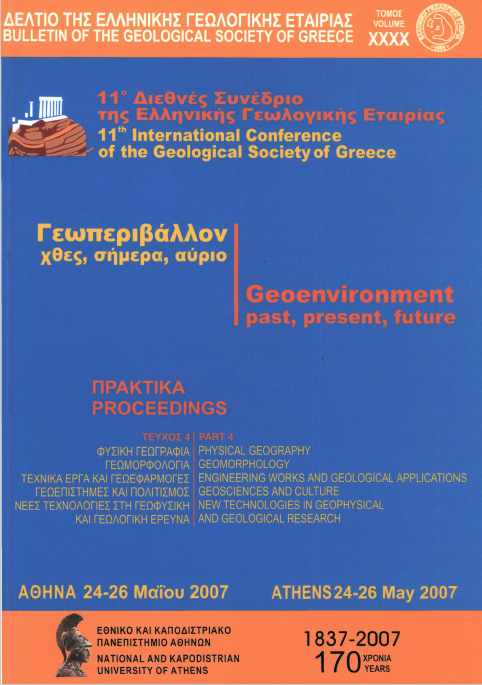SEISMIC RISK ASSESSMENT IN THE ATTICA BASIN

Abstract
This paper aims to determine the exposure-based earthquake risk posed in the Attica Basin, Greece using a GIS based methodology. The hazard level is based on grouped geological formations according to the New Ground Anti-Earthquake Regulation of Greece and the structural setting of the area. Vulnerability is calculated using two different methodologies. The first one uses a deterministic approach by attributing population values to each building block divided by the of each municipality and the second one uses a probabilistic approach by using centroids based on a building block level and then creating their kernel density. Both of these approaches are combined with land use maps to create the final vulnerability layers. Risk is calculated in two ways, using the product and a weighted overlay of the hazard and vulnerability layers. In the Risk maps, proof of concept comes from overlaying the damages from the earthquakes of 1981 and 1999 that affected Attica Basin. Moreover, both the maps show high Risk probability in the area of the east part of the Attica Basin but without significant damages from past earthquakes. This suggests that the Kifisos Fault Zone might act as a seismic barrier depending of the location of the epicentre.
Article Details
- How to Cite
-
Farangitakis, G., Brentas, O., Andreadakis, E., & Lekkas, E. (2016). SEISMIC RISK ASSESSMENT IN THE ATTICA BASIN. Bulletin of the Geological Society of Greece, 50(3), 1415–1425. https://doi.org/10.12681/bgsg.11854
- Section
- Seismology

This work is licensed under a Creative Commons Attribution-NonCommercial 4.0 International License.
Authors who publish with this journal agree to the following terms:
Authors retain copyright and grant the journal right of first publication with the work simultaneously licensed under a Creative Commons Attribution Non-Commercial License that allows others to share the work with an acknowledgement of the work's authorship and initial publication in this journal.
Authors are able to enter into separate, additional contractual arrangements for the non-exclusive distribution of the journal's published version of the work (e.g. post it to an institutional repository or publish it in a book), with an acknowledgement of its initial publication in this journal. Authors are permitted and encouraged to post their work online (preferably in institutional repositories or on their website) prior to and during the submission process, as it can lead to productive exchanges, as well as earlier and greater citation of published work.



